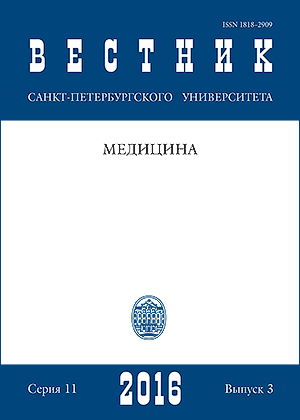СОВРЕМЕННЫЕ АСПЕКТЫ ПАТОГЕНЕЗА КАЛЬЦИНОЗА АОРТАЛЬНЫХ ПОЛУЛУНИЙ (обзор литературы)
DOI:
https://doi.org/10.21638/11701/spbu11.2016.302.Аннотация
Кальцинированный аортальный стеноз (КАС) — основная причина протезирования аортального клапана. Отсутствие медикаментозных методов лечения и высокая распространенность КАС представляют его важной проблемой в кардиологии. Современные результаты исследований клапанов аорты при их кальцификации подтверждают гипотезу, что КАС является результатом активного процесса формирования костной ткани, который может происходить посредством дифференцировки остеобластов. Хотя существуют общие факторы риска с процессом атерогенеза, не у всех пациентов с ишемической болезнью сердца выявляется кальцинированный аортальный стеноз. В статье представлены современные взгляды на патогенез кальцинированного аортального стеноза, приводится его сравнительная характеристика с атеросклерозом. Библиогр. 51 назв. Ил. 3. Табл. 1.
Ключевые слова:
аортальный клапан, аортальный стеноз, кальцификация, остеопротегерин, RANKL, RANK, атеросклероз, эндотелиальная дисфункция, матриксные металлопротеиназы, Wnt-сигнальная система
Скачивания
Библиографические ссылки
osteoclast differentiation factor in osteoclastogenesis // Biochem. Biophys. Res. Commun. 1998. No 253. P. 395–400.
References
lymphocytes: implications for lipid-induced bone loss. Clin. Immunol., 2009, no. 133, pp. 265–275.
Загрузки
Опубликован
Как цитировать
Выпуск
Раздел
Лицензия
Статьи журнала «Вестник Санкт-Петербургского университета. Медицина» находятся в открытом доступе и распространяются в соответствии с условиями Лицензионного Договора с Санкт-Петербургским государственным университетом, который бесплатно предоставляет авторам неограниченное распространение и самостоятельное архивирование.




